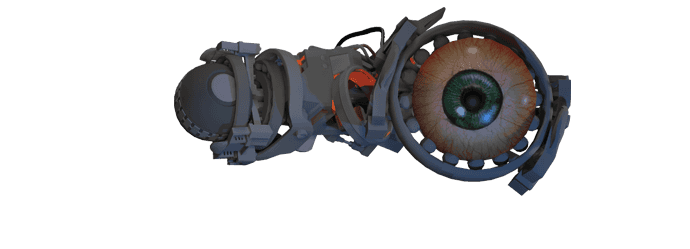TONNI’S IMPLANTS
 Smaller structures such as optics (eyes) require far less power than, for example, an arm or leg. As a general practice, both arms (or legs) are rarely replaced without some form of artificial power supply. Due to the enhanced capabilities of a cybernetic eye and the inherent safety afforded by a mechanical arm in an unknown land, many science technicians will undergo a “1+1” operation which will replace the non-dominant arm and the opposite eye for biochemically powered cybernetics.
Smaller structures such as optics (eyes) require far less power than, for example, an arm or leg. As a general practice, both arms (or legs) are rarely replaced without some form of artificial power supply. Due to the enhanced capabilities of a cybernetic eye and the inherent safety afforded by a mechanical arm in an unknown land, many science technicians will undergo a “1+1” operation which will replace the non-dominant arm and the opposite eye for biochemically powered cybernetics.Most cybernetic implants contain a power source derived from any number of sources. Periodic replacement (or charging) is therefore necessary in order to function; this is typically addressed during maintenance cycles. Frequent service charges are generally favored over long-term, potentially dangerous power technologies such as microtechnic nuclear cells.
Advanced cybernetics allow for the same biochemical fuels (sugars) used by the body to power its non-organic enhancements. Depending on the type of cybernetics involved, additional food (or cybernetic-specific supplementation) must also be well within the individual’s pay grade. This is, after all, a lifetime commitment. To help ease the biochemical charging requisites, kinetic energy can also be captured from the user’s movement to aid in maintaining optimal power levels.